First of all you need to realize that a 12V SLA battery is not, ever 12V, if it's charging then it sits around 14.3V (but that's dependent on chemistry and temperature) when it's discharging then it can be as low as 10V.
The most robust solution is to make sure that all the equipment can tolerate 10-15 V, because that will allow you to get rid of any output regulator which will waste some energy while on battery.
Almost all electronics that says 12V will easily tolerate 10-15V, much of it will be happy with 8-24V as well, the main exception are computers that feed the 12V input directly to harddisks, those devices really like a regulated 12V.
A good charger will be needed that regulates the float voltage according to temperature and also limits the charging current.
One solution would be:
- A beefy AC/DC off-the-shelf mains supply, a 19V power brick for a laptop could do.
- A Buck DC/DC converter handling charging, but a simple LM317 could also be used.
- A Buck DC/DC converter handling the on-line output regulation.
- A switch (2 FETs) which switches over to battery if the output of the online-converter drops out of regulation.
Buck converters tend to be simpler and more efficient than buck/boost converters, so that's a good reason to prefer those in a design, but if you really want a regulated 12V output then there is no way to avoid a buck/boost converter and the plan becomes:
- A beefy AC/DC off-the-shelf mains supply, a 19V power brick for a laptop would do nicely.
- A Buck DC/DC converter handling charging, but a simple LM317 could also be used, especially if the battery is stored at a fixed temperature, (look up "SLA charger lm317).
- A switch (an opamp controllring two 2 FETs) which switches the input of the output regulator from the primary input DC over to battery if it drops below the battery voltage or simply two diodes.
- A Buck/boost DC/DC converter handling the output regulation.
A good buck/boost converter topology is SEPIC, because you only need one FET and a single coil, so it's cheaper than two converters back-to-back: http://dren.dk/carpower.html the linked design will output the same voltage no matter what the input voltage is (8-24 V)
... or, if you are lucky, you can just buy one:
http://www.mini-box.com/micro-UPS-load-sharing
